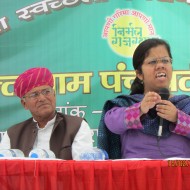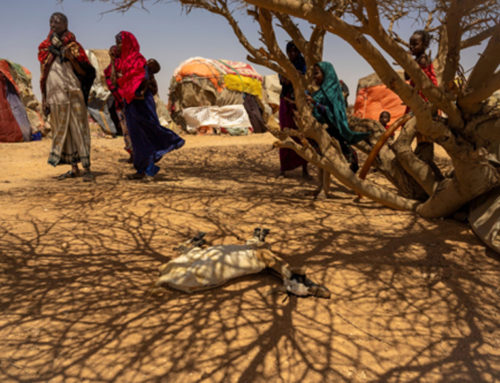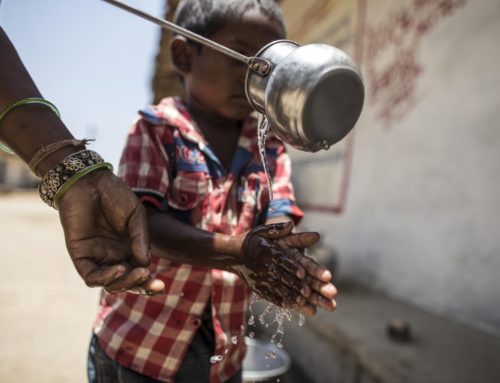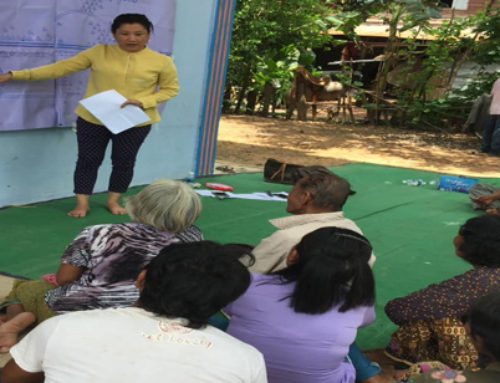Her eyes misted over as she clutched the edges of her “ghoonghat” trying to pull it down to cover her face. I had just asked her why she was out late at night. I had seen her in a group of women silhouetted in the headlights of my car as we returned from a ratri chaupal in the adjoining village. “We don’t have a toilet at home”, she mumbled while shuffling anxiously. “We have to wait until dark before we step out so no one spots us,” chipped in one of the elderly women in the group from behind her.
As district magistrate in Bikaner, one of the most disturbing sights late in the night, were lines of women squatting along the roadside in the dark, often springing up to stand if the headlight of the passing cars fall upon them. These women wait until it is “dark” and “safe” enough to step out to defecate, away from prying eyes in order to retain some modicum of dignity, as little as is left once they defecate in the open.
This is a reality that affects thousands of rural women across India. Around 595 million people, which is nearly half the population of India, defecate in the open. India accounts for 59 per cent of the 1.1 billion people in the world who practise open defecation. The issue is not just one of dignity of women alone. Open Defecation has huge health implications and in turn implications for the entire economy. Diarrhea kills more than 2195 children in the world every day, more than the number killed by AIDS, malaria and measles combined. This hard statistic is an even grimmer reality in India which reports the highest number of dihaorreal deaths, in the world, of children under five. Frequent bouts of diarrhea weaken the immunity system of children making them more susceptible to other infections like pneumonia and making them severely malnourished. According to World Bank research, interventions in sanitation and hygiene can be a huge propellant to economic growth. For every $1 spent on sanitation, approximately $5.50-worth of economic benefits are generated, including school days gained & reduction in medical expenditure.
Open defecation is therefore not just a social and economic problem but also an issue of human rights.
Owning a toilet is not an aspirational need in India. It is easy to find households in rural India which own mobile phones and television sets but continue to practice open defecation. Social values and traditions have also had an impact and topic of toilets and defecation not discussed in public. The issue is not just that of economic deprivation or social mores but more a behavioural one. Despite health problems, problems during pregnancy and illnesses, women in Bikaner continued to defecate in open since it was something done for generations and because toilets were never a felt need and thus they had no access to them.
Therefore the clarion call of the Prime Minister to end Open Defecation in India by 2019 is one of the most challenging developmental goals today. The 2011 census showed that only 31% of rural households in India had access to toilets.
Swachh Bharat Mission (Grameen) for the first time talks about creation of Open Defecation Free Gram Panchayats and the monitoring of not just output (toilets) but also outcomes ( their usage). Since 1951, Government of India has spent close to Rs1.57 lakh crores on water and sanitation programmes in rural India; govt data states that 87 million toilets were constructed across Indian villages under Nirmal Bharat Abhiyan. The 2011 census however, found that the total number of toilets was 52 million (including toilets constructed much earlier), indicating that, at the very least, 35 million toilets were either constructed on paper or fell apart later.
Closer home a country like Bangladesh has only 3% of the total population defecating in the open. What varies in the approach of the Bangladesh programme to end open defecation and the earlier programmes in India is the difference in focus. Instead of merely running the scheme as a toilet construction programme there has to be an attempt to bring about behavioural change in the people. Toilets have to become a means to the end of creating an open defecation free community. States like Himachal Pradesh and certain districts in Maharashtra and Rajasthan have successfully implemented a programme to bring about behavioural change.
What Swachh Bharat Mission (Grameen) does differently, is it allows states the enabling freedom to devise a programme with a focus on ODF communities. It is based on the premise that a mere subsidy programme to build toilets with concurrent IEC activities is not enough. Merely lecturing people through slogans and posters has failed to deliver on the goal of creating ODF communities. In districts like Bikaner, Community Led Total Sanitation (CLTS) approach was adopted with miraculous results.
Sanitation is a public good and must be recognised to be one. Its benefits will be achieved when the whole community adopts it. Even a single household or person defecating in the open puts the entire community at risk. Once a community is “triggered” to realizing the risks they are putting themselves to, the collective behavioural change is a result. Toilets are not just constructed but also used.
One of the weaknesses of the earlier govt sponsored programmes has been non usage of toilets after they are constructed. Earlier programmes allowed third party construction either through gram panchayat or NGOs without bringing about any behavioural change. These toilets ended up as becoming stores for household items or shelters for domestic animals.
The campaign in Bikaner conversely stressed on a household building its own toilets. This facilitates a feeling of ownership and ensures usage. Once a collective mind-set change was ensured, communities came together generating innovative practices at the grass-root level to ensure that each and every person in the village, constructed and later used the toilets. Ensuring ODF status through early morning nigrani become the interest of the community. Toilets, therefore became an aspirational need and a symbol of the dignity and pride of the family and the community as a whole.
By reorienting administrative set up in Bikaner to act as facilitators (of behavioral change) and not providers (of individual toilets), the collective conscious of the community was kindled. This led to a massive increase in number of ODF villages in Bikaner and increase in percentage coverage of toilets from 29% (2011 census) to 82% (in March 2015). Over 1.99 lakh toilets (highest in Rajasthan) could be constructed in the district during a 2 year period re-emphasising the point that when focus in on creating ODF Communities, the toilets get built on their own. Over 200 Gram Panchayats were declared ODF.
In the rush to achieve targets just building toilets will be detrimental to the larger goals of the campaign. The focus of the Prime Minister has sounded the battle cry on Open Defecation. Now it remains to be seen whether the administrative system can reorient itself to ensure that the war is won.
The author of this blog is Arti Dogra. She is an IAS Officer of Rajasthan cadre. The views expressed here are her own.







Leave A Comment